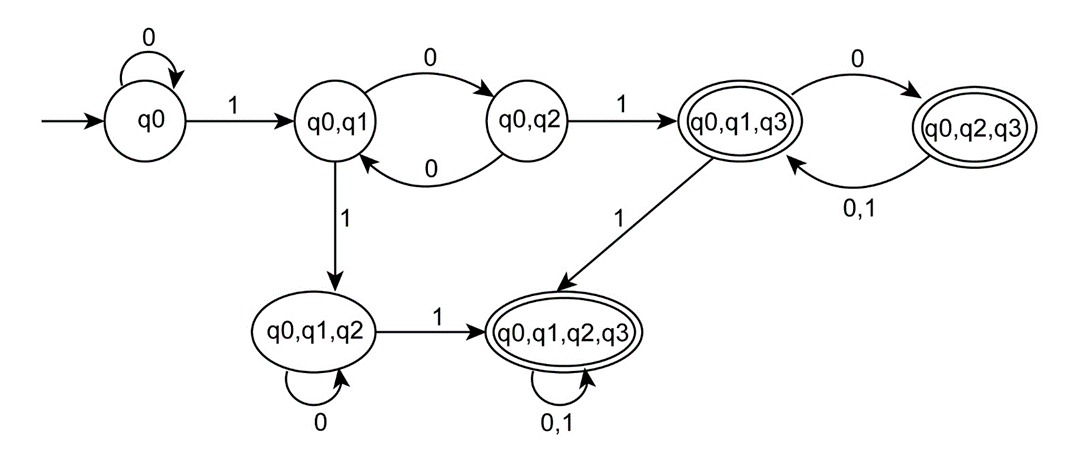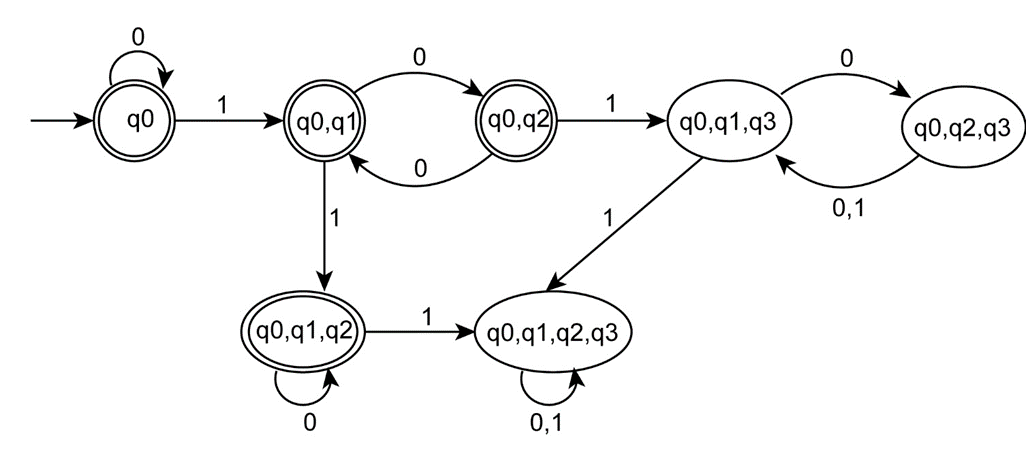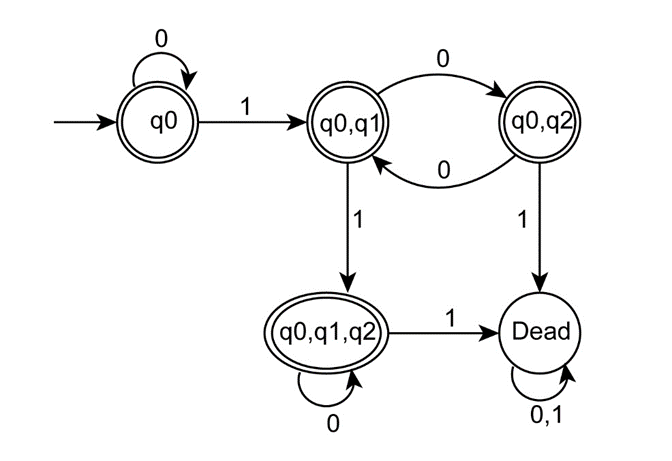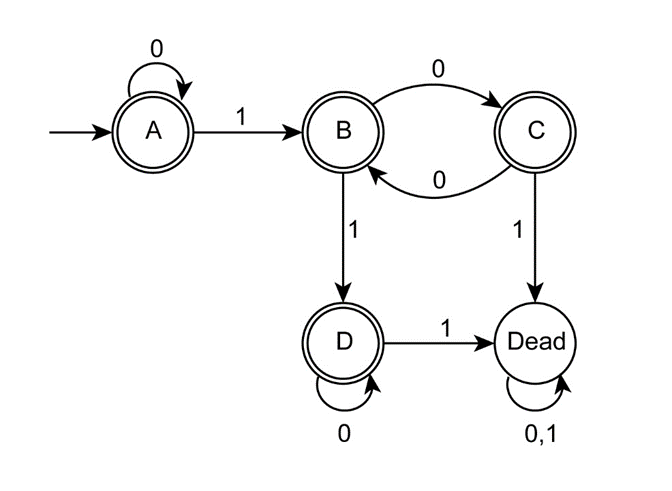Construct the NFA for the given statement, then convert it into a DFA. Construct the NFA, that it accepts the strings that do not contain a pair of 1s that are separated by an odd number of symbols.
The NFA, is as follows:

Convert the NFA to DFA as follows:
- Create an empty set.
- Make the initial state of NFA the same as the initial state of DFA and add the set of states of DFA.
- Find the possible set of states for every new state for each input symbol by the transition function of NFA and add new states to the set of states.
- Start the above transition from the initial state.
- Stop the procedure if no new states are formed.
- Declare the final states of DFA, which is the set of final states of NFA.
The state diagram of the DFA is as follows,

Change the final states to non-final states and vice versa to complement the above DFA as follows:

Combine the dead states in the above DFA as a single state as follows,

Simplify the above DFA by renaming the states as follows:

Therefore, the state diagram of a DFA with five states that recognizes has been obtained.







